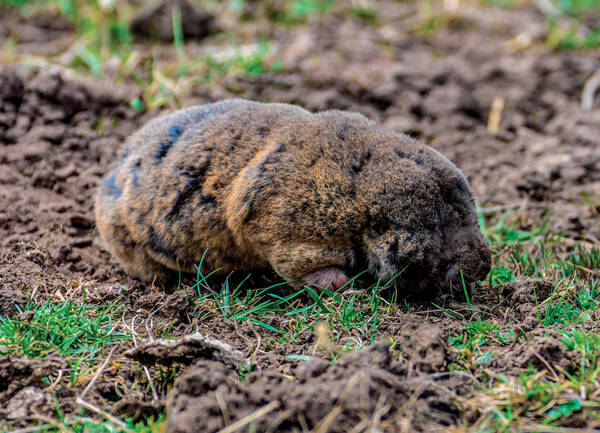Myospalax fontanieri
IUCN
LCBasic Information
Scientific classification
- name:Myospalax fontanieri
- Scientific Name:Myospalax fontanieri,Common Chinese zokor,Eospalax fontanieri,Blind mouse, ground mouse, mole
- Outline:Rodents
- Family:Rodentia Cricetidae Zokor
Vital signs
- length:18-22cm
- Weight:
- lifetime:
Feature
The body shape is similar to that of the Northeastern zokor, but the front feet and front claws are thinner and shorter. The head is broad and flat, the nose is blunt, the back is obviously rusty red, and the hair base is gray-brown.
Distribution and Habitat
It is endemic to China. It is distributed in Sichuan, Gansu, Qinghai, Tibet, Shanxi, Shaanxi, Ningxia, and Inner Mongolia.
Chinese zokor prefers to live in deep and soft soil on the gentle slopes of barren mountains, terraces, sparse forests and shrubs at the bottom of tree forests, grasslands, and alpine shrubs. It chooses low-lying areas with loose and moist soil and relatively abundant food as its habitat. The vertical distribution can reach alpine meadows of 3800 to 3900 meters, and there are fewer alpine shrubs.
Appearance
A large rodent that is highly specialized for living underground. The average body length is over 200mm, with a shorter tail of 40-60mm. The eyes are degenerate. The ears are degenerate. The claws on the front limbs are very powerful, suitable for digging. The fur is dense and thick, adapted to living in a cold environment. The coat is brown-gray, and the belly hair is brushed with dry yellow. The tail is almost naked. The skull is thick, with a notch on the rear edge of the nasal bone, a well-developed sagittal crest, and a hanging orbital process.
Details
The Chinese zokor belongs to the subfamily Myospalacinae. There is much controversy over its classification. It was previously considered to belong to the family Myospalacinae. Since 1997, a number of molecular biological studies have shown that zokor and bamboo rats, as well as the northern Asian mole-shaped rat subfamily (Spalacinae) and the African mole-shaped rat subfamily (Tachyoryctinae) form an evolutionary branch, and are sister groups to all other rodents. Therefore, it has recently been classified as a subfamily of the family Myospalacinae. In terms of species, the classification is also very confusing. There used to be many subspecies, which were later promoted to species. It inhabits the alpine meadows of the Qinghai-Tibet Plateau and the grasslands of North China. It rarely moves on the ground and lives underground for life, forming beaded mounds on the ground. The mounds are generally about 25cm in diameter and about 15cm high.

The Chinese zokor lives underground all year round, does not hibernate, is active day and night, and feeds on underground stems and tubers of plants. It especially likes to eat sweet potatoes, potatoes, carrots and beans. In their holes, they often store a lot of food, such as beans, sweet potatoes, fresh alfalfa, sedge and other herbs. They like to live in the thick and soft soil of the gentle slopes of barren mountains, terraces and sparse forests, grasslands and alpine shrubs at the bottom of the tree forest. They reproduce 1 to 2 times a year, with 1 to 5 babies per litter. They are distributed in China, Russia, Mongolia and other places.
Chinese zokor is a major pest of agriculture and animal husbandry. In agricultural areas, they bite off the roots of crops, causing plants to die, or drag the entire crop from the ground, causing large areas of crops to be missing seedlings and broken ridges. Due to the large-scale theft of stored grain, the crop harvest is affected. In pastoral areas, they destroy forage grass, and the soil pushed out by digging holes piles up, reducing the area of grassland. Due to the criss-crossing tunnels, the damage causes the loss of topsoil and promotes grassland degradation.








